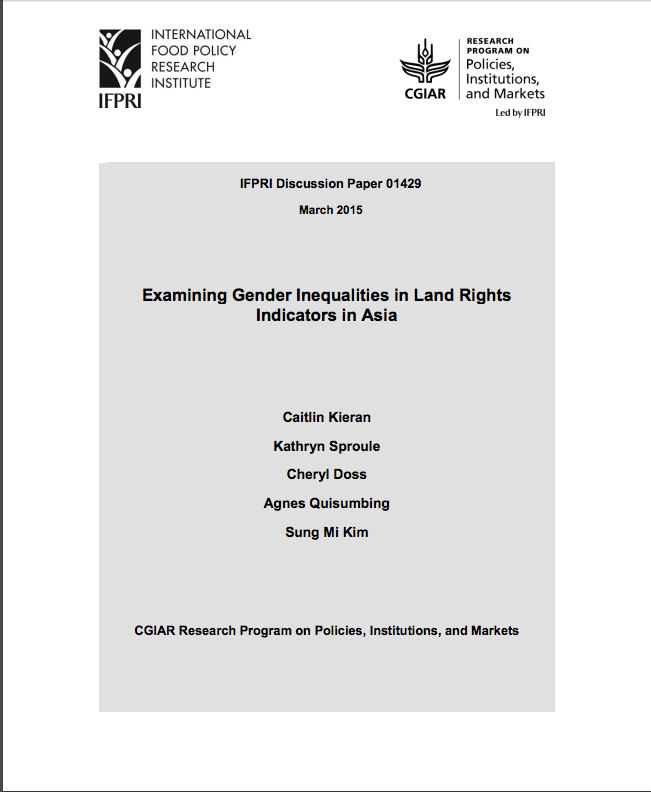Examining gender inequalities in land rights indicators in Asia
This paper reviews the available data on men’s and women’s land rights, identifies what can and cannot be measured by these data, and uses these measures to assess the gaps in the land rights of women and men. Building on the conceptual framework developed in 2014 by Doss et al., we utilize nationally representative individual- and plot-level data from Bangladesh, Tajikistan, Vietnam, and Timor-Leste to calculate five indicators: incidence of ownership by sex; distribution of ownership by sex; and distribution of plots, mean plot size, and distribution of land area, all by sex of owner.










